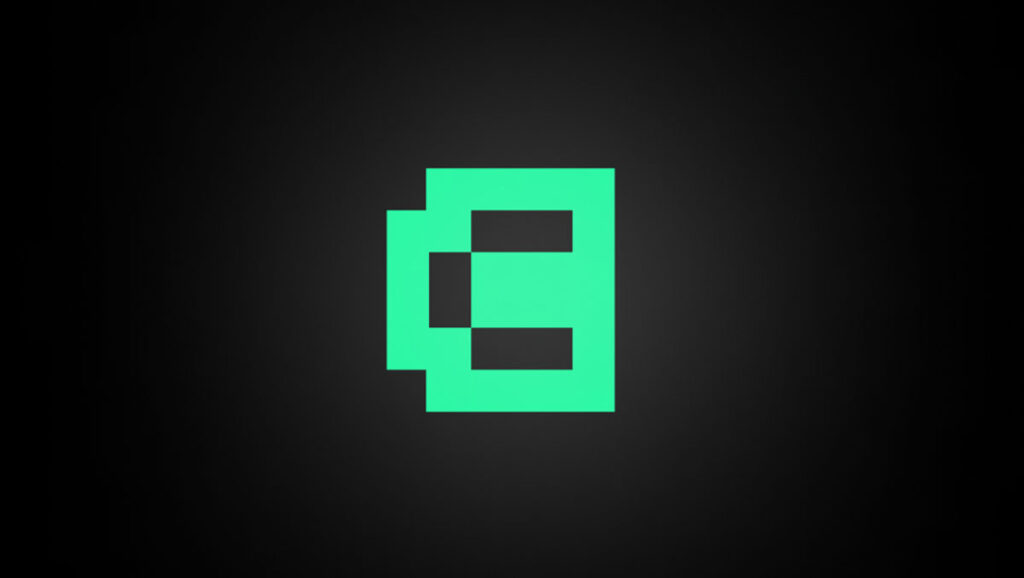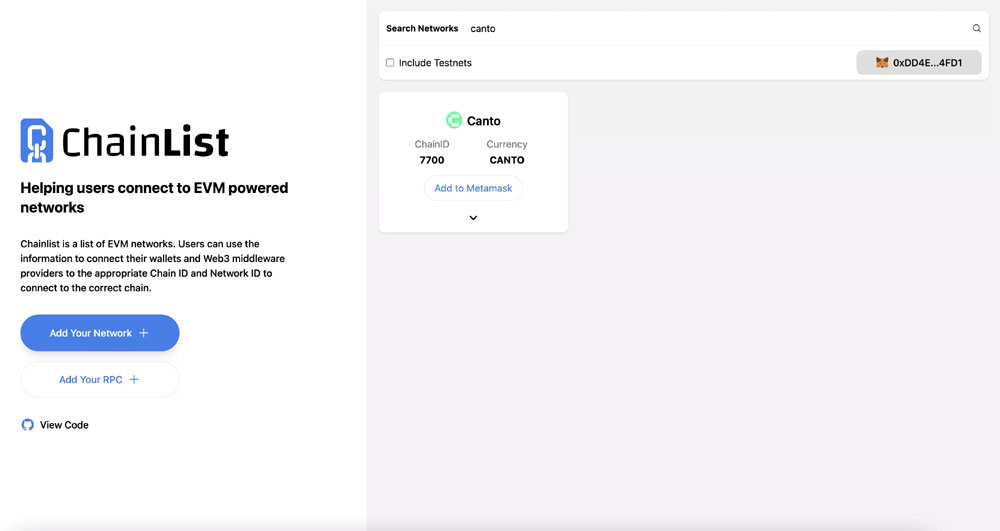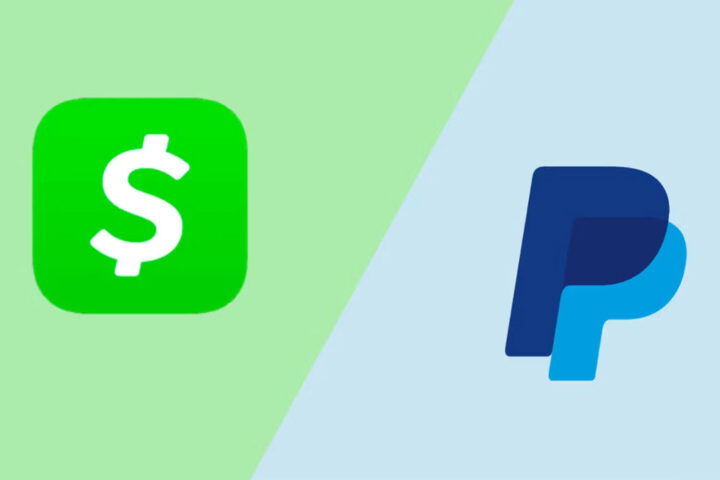Users can add the Canto Layer 1 network to the MetaMask Wallet or alternative Web3.0 crypto wallet as it’s an EVM-compatible blockchain. The safest way to attach the authentic RPC for Canto to MetaMask is via the ChainList application. This app is an EVM network data aggregator that grants users to search information for the L1 or L2 blockchain to add it to the wallet quickly. Continue reading to learn about Canto and how you can connect it to MetaMask.
About Canto
Canto is a permission less L1 blockchain harmonious with an EVM (Ethereum Virtual Machine). Its design enables it to deliver on the DeFi (decentralized finance) guarantee that the new visions will become smoothly available, decentralized, fully transparent, and free through a post-traditional financial drive. Canto established with no core foundation, vesting, presale, and venture bakers are fully decentralized. Canto’s TLV (total value locked) is about $109.03m, with much of this locked in its lending and DEX protocols.

Canto leverages the Cosmos SDK (Software Development Kit) and the Tendermint Consensus protected by Canto validators. It attains EVM compatibility via the Ethermint system, which allows the EVM execution environment, also facilitating ETH smart contracts’ growth to Lending Market (CLM), Canto Decentralized Exchange (DEX), and NOTE. The objective of Canto is to become the “top execution layer for original work via the implementation of:
- Zero Fees LPs (Liquidity Providers): Traders, arbitrageurs, and protocol users can freely access liquidity.
- Rent Extraction Resistance: Canto thinks key decentralized apps such as DEXs and lending protocols must not have governance tokens to provide FPI.
- Minimally Reasonable User Capture: Key public primitives lack user interfaces to allow user acquisition for Canto protocols.
How Does Canto Function?
The team behind Canto has found three key primitives that anchor secure DeFi ecosystems:
- Lending markets (such as Aave)
- Decentralized units of account (like DAI)
- Decentralized exchanges (including Uniswap)
Whereas many of these introduce a governance token to extract rent from new customers, Canto has released these as public utility protocols, also called FPI (Free Public Infrastructure).
This means the users can access the offerings of Canto without paying any fee, leaving governance to the chain. The Canto Decentralized exchange will remain ungoverned and can’t release a token or include additional charges. At the same time, stakers will govern the Canto Lending Market, which focuses on developing the ecosystem and building an environment that works for DeFi users and developers.
Finally, its algorithm adjusts the interest rate for NOTE to promote a less volatile cost instead of increasing revenues. However, the interest charged via borrowing is NOTE in the CLM that the protocol will collect to fund the public goods.
Services Offered by Canto
As outlined above, Canto has introduced three financial primitives developed to support the FPI (Free Public Infrastructure), which is important for creating new systems that are transparent, accessible, rent-free, and decentralized.
Lending Market
CLM (Canto Lending Market) is a common pooled lending Compound v2 fork backed by Canto stakers. These stakers are essential in developing the Canto ecosystem by generating the best environment for users and developers. The best way to foster an ideal ecosystem is to remove rent extraction from the application layer.
Canto Lending Market accepts liquidity tokens through the Canto DEX as collateral. Customers deposit their collateral in the lending protocol as supply, but they aren’t available for borrowing LP assets.
Canto DEX
As no one can govern or upgrade the Canto Decentralized Exchange, working on Canto perpetually without the capacity to introduce a token or implement additional fees with time restricts the probability of the greedy progression toward rent-extraction behaviors. Mainly, Canto DEX leverages the AMM (Automated Market Maker) method to source liquidity through trading pairs developed by LPs. The developers receive rewards with liquidity pool tokens, which they can again collateralize and borrow against.
Canto has introduced a liquidity mining program that provides tokens linearly every block to LPs. Since its release, the program has confirmed sufficient liquidity by splitting the genesis block into teams of liquidity mining incentives. The primary token block offered incentives for LPs for initial six months, whereas the second block catered to a long-term period.
NOTE
NOTE (Canto Unit of Account) is an ERC-20 token that works as the unit of account for Canto. Primarily, Canto has launched and locked the complete supply of NOTE in the Accountant contract of CLM. The collateral lent has entirely backed the NOTE to CLM, and users can utilize ETH, CANTO, Canto LP, or ATOM assets as collateral to borrow NOTE. Additionally, automated smart contracts like the Accountant contract of CLM manage the supply of NOTE by providing the collateral to other borrowers. This is how NOTE maintains its value, which is about $1.
CANTO Tokenomics
CANTO is the utility token facilitating staking activities and liquidity mining on the Canto blockchain. It consists of a circulating supply of 322M, an overall supply of 1B tokens, and a market cap of 109M. Following is the distribution of CANTO:
- 13% allocated to Contributors
- 2% for the Settlers of Canto
- 5% for the Future Grants
- 35% for Medium-Term Liquidity Mining
- 45% for Long-Term Liquidity Mining
Some active markets where users can trade CANTO are MEXC Global, Bitget, and Canto DEX.
How to Add Canto to MetaMask Wallet
Canto is a permissionless L1 blockchain created for decentralized finance using the Cosmos SDK. It is also EVM compatible, so that you can add it to MetaMask. Following are the three methods to add Canto to MetaMask.
Via ChainList App
- First, launch the ChainList app on your device and connect your MetaMask account.
- Next, you must look for Canto using the search network box on the top.
- Then, navigate to the Canto card and hit the Add to MetaMask tab.

Manually via MetaMask
- To start, you must access your MetaMask Wallet using the password.
- On the home screen, tap on the Network menu at the top.
- Then, hit the Add Network icon.
- After this, provide the following RPC data in the preferred fields.
- Network Name: CANTO
- New RPC URL: https://mainnode.plexnode.org:8545
- Chain ID: 7700
- Currency Symbol: CANTO
- Block Explorer URL: https://evm.explorer.canto.io/
Automatically via Canto DEX
- You should head to the Canto DEX.
- Then, select the Connect Wallet option to connect the MetaMask Wallet.
- Now, read through the prompts to connect the Canto blockchain automatically.
Is Canto Secure?
Canto is the safest L1 blockchain created by famous DeFi advocate Scott Lewis. This network has over 100 million dollars in TVL (Total Value Locked) over the DeFi protocols, which shows its increasing popularity and perceived security amongst users in the cryptocurrency ecosystem.
Also Read: How to Install MetaMask Wallet: A Step by Step Guide
Final Verdict
Adding Canto to MetaMask or an alternative Web 3.0 cryptocurrency wallet is straightforward because of the ChainList app and compatibility with EVM. You only need the validated RPC data, which you can find using their easy search engine. After adding, you can begin interacting with the popular DeFi apps on the L1 blockchain.


